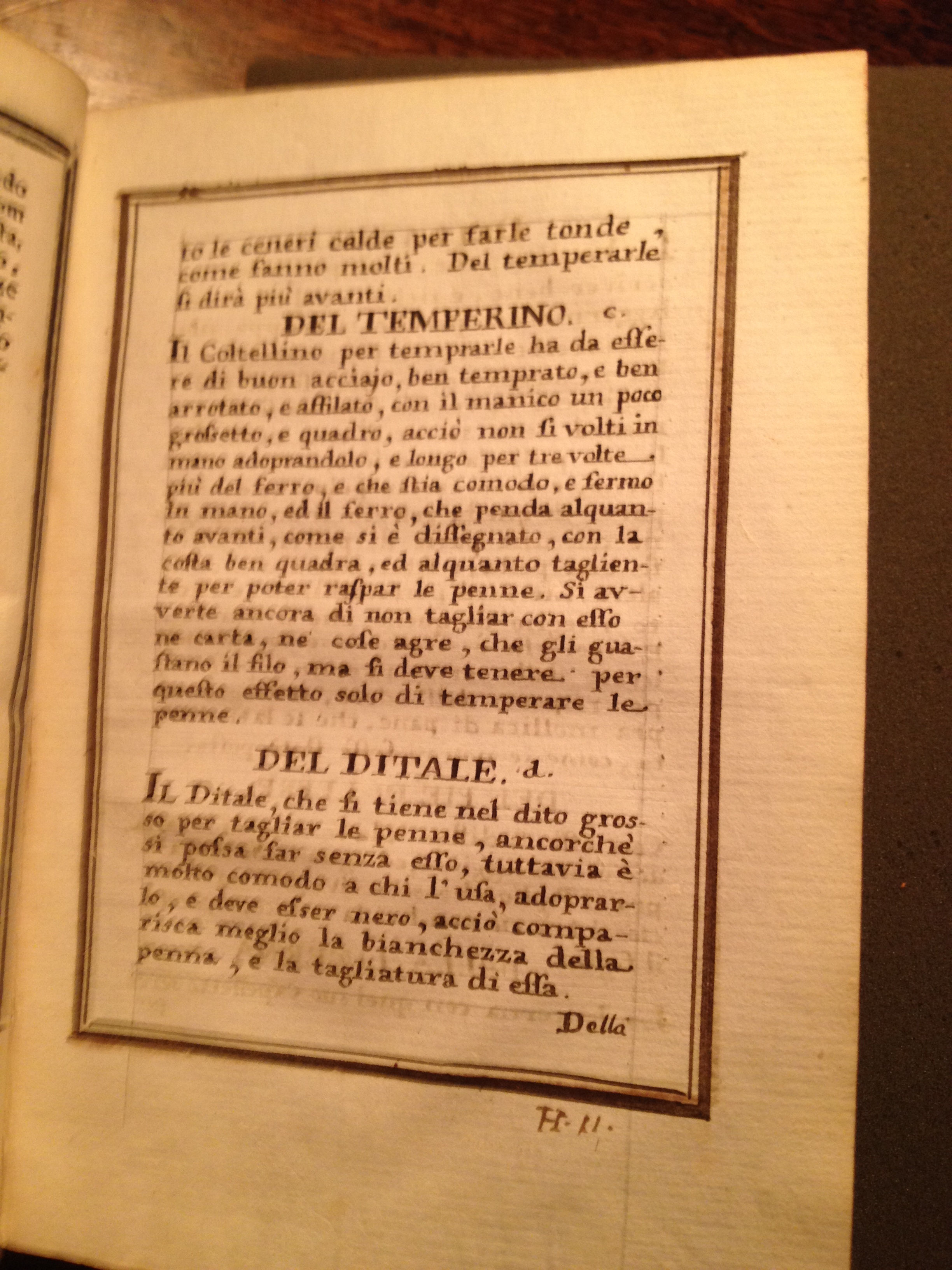The varieties of a Palatino edition
I made a few discoveries about Palatino editions at the Folger Shakespeare Library. I had taken a look at 3 copies of Libro di M. Giouanbattista Palatino at the Newberry printed by Blado. My interest was piqued enough to take a look at the Folger's copies of Compendio del gran volume. I wrote about the 1566 printing of that title in the last post.

The 1588 copy of this book would appear to be the same, except the typesetting would be different. But as I looked at the 1588 book, I discovered an anomaly that took a minute to figure out. Near the end of the book text was handwritten in the style of the typeface and pasted over a printed text. But only on a couple of pages. It isn't uncommon to find that a scribe had been employed to make a facsimile of a missing text. However, it is a feat to accomplish copying the type closely because the pen and the graver make two distinctly different kinds of letters. The scribe's skill is apparent here.
The second thing that is striking is that this book was "made up" meaning it was constructed from various editions of the title sometime after publication in 1588. Taking the time in the late 16th or 17th C. to make up a copy tells of the importance of a Palatino to collectors dating to that era. It also suggests that making up a book from non-historic sources wasn't looked on too poorly during the previous 3 to 4 centuries.

Making sense of these variations kept me occupied for a few hours and honed my skill at looking for and detecting variations in production, assembly, binding and repair. Early printed books are very much individual objects. Sometimes the variations in production are easy to spot when viewed side by side. The institution may have a second, third or fourth copy of the same title and edition and the books will look almost unrecognizable as the same title because of changes, use and storage in the intervening years.

